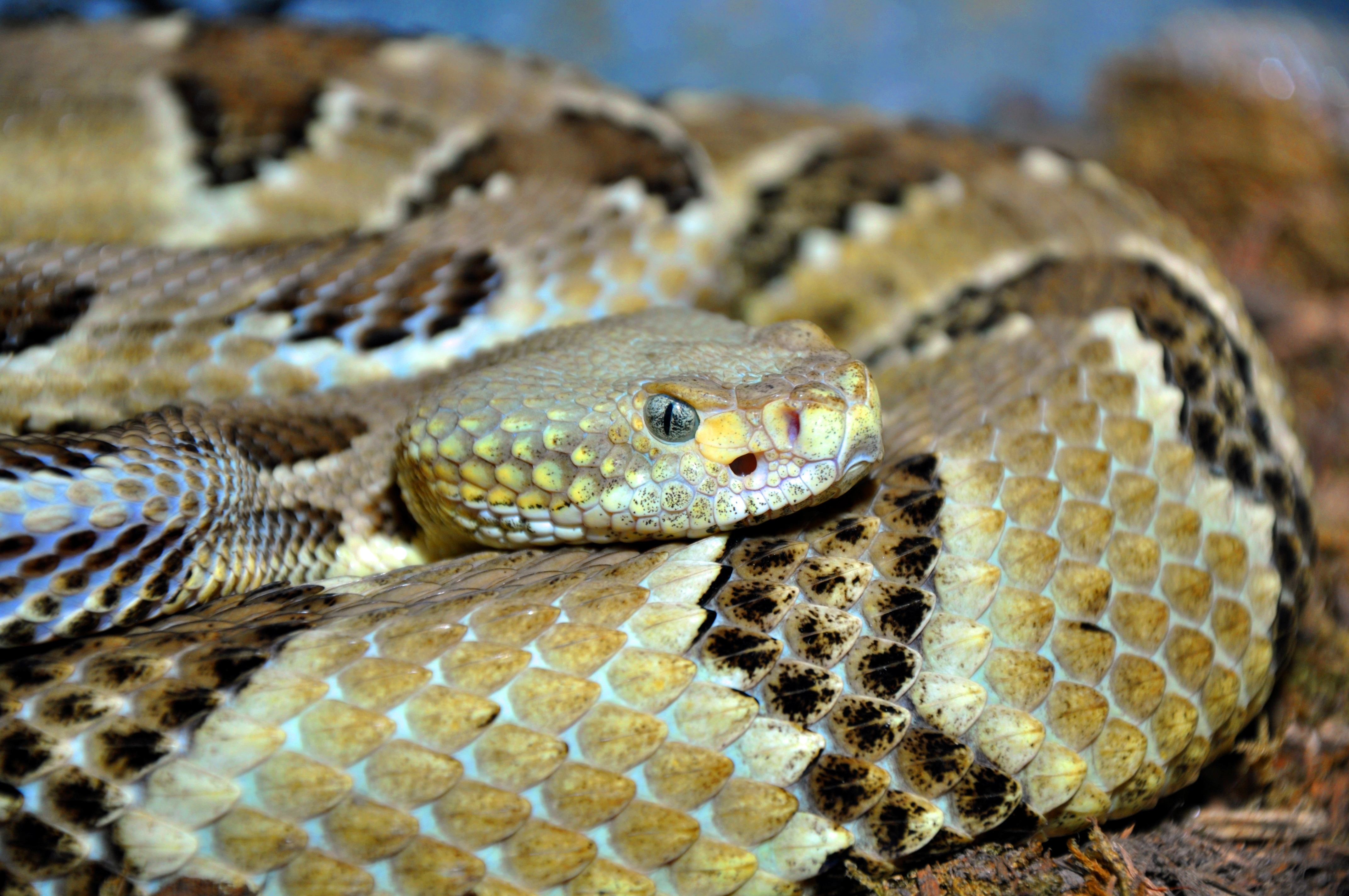Timber Rattlesnake Feeding (Video)
By Thomas Waser In Cold Blooded CreaturesMost people have a basic understanding of how snakes kill their prey; some snakes, such as boas and pythons, constrict their prey, squeezing it to death before consuming, while others, such as cobras and vipers, envenomate their prey with deadly toxins. But then what happens after the hunt? How does a snake eat its prey without the use of arms of legs? And how on earth do they swallow prey larger than their own heads? Well the herpetology department filmed the following video to show you just how they accomplish it!
(NOTE: The following video features a Timber Rattlesnake eating a small rat. The Virginia Living Museum does NOT feed its snakes live prey.)
All snakes are carnivores and consume their prey whole. Their jaw is double jointed, so when eating the jaw can “unhinge” and open as wide as 150 degrees! This allows them to stretch their head to accommodate large prey. In humans, our upper jaw is fused to the skull, where as a snake’s upper jaw is attached to the rest of the skull by muscles, ligaments and tendons, allowing the two sides of the jaw to move somewhat independently of each other. The bones that make up the lower jaw are not fused at the front, meaning the lower jaw can separate and move independently as well. As you can see in the video, once the snake has the prey in it’s mouth, it “walks” its jaws forward, one side pulls the prey in with curved, gripping teeth while the other side stretches forward for the next bite. For the rattlesnake in the video, this entire process only took about 9 minutes! Once in the esophagus, muscles will begin crushing the food as it moves into the digestive tract. Snakes are able to digest their prey whole…fur, bones and all!
The Virginia Living Museum herpetology department feeds its snakes just once a week. Each snake receives food relative to their body size; small snakes will get a small mouse while large snakes, like our rattlesnake, will get a rat. All of our snakes are fed frozen rodents that have been thawed and warmed up, and do not eat any live prey (it is much easier for them to eat food that is already dead!).
If you enjoyed the video, be sure to visit the Virginia Living Museum this summer and check out all the awesome adaptations exhibited by our snakes and other animals! You never know what you’ll see them do!







No Comment
Sorry, the comment form is closed at this time.